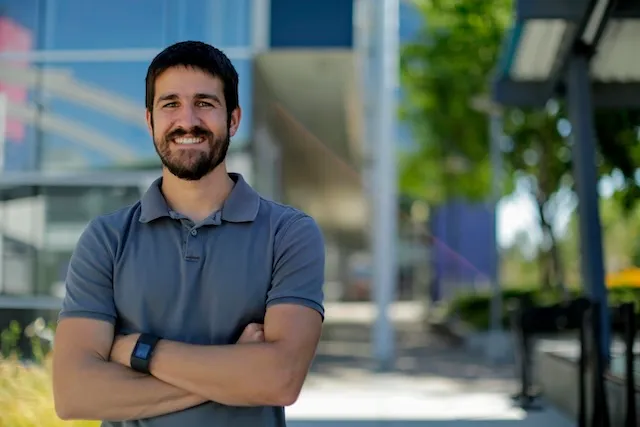
The rise of AI technology, specifically Large Language Models (LLMs) and other generative models, is beginning to reshape and disrupt certain aspects of life. Education, the arts and even the idea of interpersonal relationships are being tested by AI; and it’s unlikely to end there.
How should we, as the church1, approach these technologies?
I believe that the church should lean on our theology, be informed about the technology and promote practices that are in proper alignment with both.
Theology
As the church, we believe that God is the source and sustainer of all creation. In the book of Genesis, we read that God called his creation “good,” and we have learned through science that He set up various physical laws on which it operates.
Also in Genesis, we read that humans are created “in the image of God.”
So God created human beings in his own image.
In the image of God he created them;
male and female he created them.– Genesis 1:27, NLT
There’s all sorts of depth there, but part of it means that like God, we too have the desire and ability to create. As we create we are bound by the physical laws that God put in place and called to follow special laws that He gave us. In the Gospel, Jesus sums up those latter laws like this: Love the Lord your God, and love your neighbor.
So in addition to the physical laws that must be followed, as people who want to honor God in our roles as image bearers, what we create and how we create should be an expression of our love for God and neighbor.
We also learn in Genesis that despite being made in the image of God, we have to grapple with a hard reality: we are fallen from what God intended, tainted by sin. The result is that even the very best of our creations are often used for purposes that reflect that sin nature, rather than the image of God.
Technology
Like many other human creations, LLMs are inspired by God’s own work in nature. They are computerized models of our brains. Just as training a human brain takes time and effort, so too does training an LLM. Just as different thoughts or concepts activate different parts of our brains, so too do words or phrases to the LLM when provided as input. In this way, LLMs are a marvelous reflection of God’s creation, similar to how we use synthetic honeycomb structures for their strength or model an aircraft wing like that of a bird. So from a high level, we can appreciate LLMs for the goodness they have by virtue of being modeled on creation.
But also like any human creation, they are tainted by our sin nature; perhaps even more inherently than other things we’ve made. That’s because not only were they made by humans, but they are trained on our best and worst thoughts and ideas as conveyed by language.
LLMs aren’t programmed like normal software. Their neural networks are trained on text from nearly the entire Internet. The training involves encoding words to numbers, feeding those numbers into a computerized neural network and doing math to tune the network to help it predict the next word in a sequence. A second phase of training is then done by providing a bunch of curated question and answer examples that wind up tuning it to perform chat-style interactions. All of the training strengthens or weakens various connections between the modeled neurons and, from that, conversational ability and understanding of concepts emerges.
Other generative models are similarly interesting.
Image generation models use something called diffusion. They accept a text prompt of what to create and start from a random noise image (if you’re old enough, imagine “TV static”). Pixels in that random image are adjusted over and over and multiple outputs are trialed against each other to find the one that (to a computer model) looks more like the requested image. Eventually the image reaches a threshold that the model deems good enough and you see that output on your screen. Like LLMs, these models have been trained, but on what things look like rather than the relationship between words.
Practices
Having considered AI in light of some of the theology and technology, what should we do with it?
Should we do like the Amish and reject this new technology outright, choosing to walk a very different path than those around us? Should we say or do nothing, leaving each individual free/burdened to figure out what their own personal use of AI should look like?
Rather than either of those extremes I believe that we should take a middle road, and consider practicing the use of AI technology in alignment with our theology2.
Our practices have practical implications on how we live out the Gospel of Jesus Christ. The ways we approach scripture, work, relationships, entertainment and use of tools are all practices. As Christians we should be measuring our practices against the knowledge that we bear the image of God into a fallen world, and are His ambassadors. That definitely includes practices of using these new AI tools.
To that end, here is a suggested list of practices to avoid and practices to explore as you interact with AI technology3. As you read them, consider:
- Do you agree or disagree with any of them?
- Are there others that you would add to either grouping?
- Who is a brother or sister you can talk to as you discern?
Avoid
- Avoid replacing human relationships with AI companionship
- We were made to be in relationship with God and fellow humans
- Avoid replacing critical thinking with AI shortcuts
- You are “fearfully and wonderfully made” – don’t outsource that to a machine
- Avoid replacing creative work with AI output
- God wants your best offerings, not a quick substitute
- Avoid relying solely on AI for authoritative information
- “Don’t believe everything you read on the Internet” applies even more so today
Explore
- Explore using AI to enhance learning
- Consider using LLMs as calculators for language/ideas or interactive textbooks
- Explore using AI to perform rote tasks
- Example: taking minutes during a meeting so all human participants can be fully engaged
- Explore using AI as an intelligent search engine
- “What does our current church policy say about [fill in the blank]?”
- Explore using AI to do helpful things you otherwise couldn’t do
- Example: translating old handwritten foreign documents to English
Conclusion
There is much more that could be said about AI both in theological and technological terms. The point of writing this is to start a conversation or at least a thought process into how the church should respond to AI technology. I welcome your thoughts and feedback.
Thanks to my family who read drafts of this and helped me revise and refine it.
Update 2025-04-01: added footnote re: “extremes”.
Footnotes
-
I initially started writing this to share just within the local church I’m part of. After I got into it though, I thought it might be worth it to share more broadly in case other fellow followers of Christ might be thinking about these things. ↩
-
Of those two “extremes”, I have a lot more respect for the Amish one. I feel like oftentimes the modern church is more passive in approaching technological change and we all just accept what we’re given (see smartphones, social media, video doorbells). At least the Amish are being principled. ↩
-
I think there is some tension between these groupings. For example, could use of AI in learning get in the way of a student/teacher learning relationship? ↩
